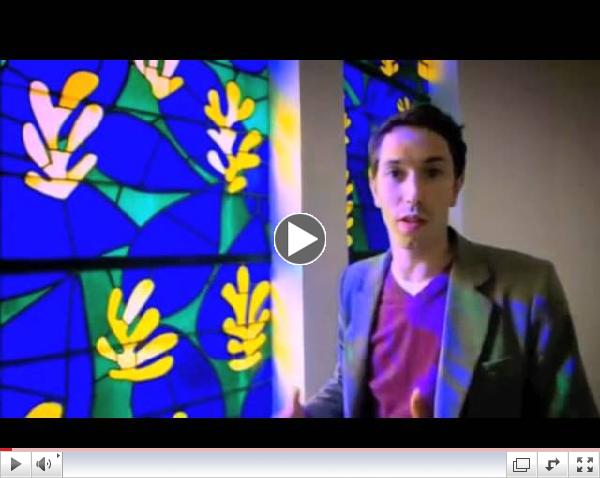|
Matisse's Chapel
Late in life, Henri Matisse, generally thought to be an atheist, became friends with a Dominican Sister.
In gratitude for her friendship, Matisse designed the chapel for her convent and paid for its construction.
 | | 20100510 BBC Matisse |
This video, an excerpt from a BBC documentary, explores the charming -- and moving -- chapel, which Matisse considered to be his crowning achievement.
|
|
We appreciate your loyal readership and kind words of gratitude for the Soul Windows - Reflection newsletter. We are glad to send it free of charge. However, if you would like to support our ministry financially, you may make a contribution online through PayPal. May God bless you a thousandfold.

|
|
|
|
|
Seeing Beyond the Lines
Last week, Jan and I visited the marvelous exhibit, "Matisse: A Life in Color," (a traveling exhibition from the Baltimore Museum of Art's Cone collection) at the San Antonio Museum of Art. Much of Henri Matisse's work is colorful, to say the least: paintings filled with bright, eye-popping colors, swirling lines and emotive energy.
In retrospect, however, what speaks most powerfully to me are his monochrome, minimalist drawings. A few sweeping lines, often  unconnected, suggest not only a form, but also evoke a mood. The object portrayed is more hinted at than presented. The artist trusts the viewer to fill in the gaps, to construct the scene, to see beyond the lines. unconnected, suggest not only a form, but also evoke a mood. The object portrayed is more hinted at than presented. The artist trusts the viewer to fill in the gaps, to construct the scene, to see beyond the lines.
"I do not paint things;" said Matisse, "I paint only the difference between things." In that difference lie mystery and beauty, insight and joy.
Between the lines, energy echoes. Beyond the lines, meaning arises. Just as the electromagnetic forces of protons and neutrons hold all the world together, it is the relationship between things that gives rise to beauty and reveals truth.
Only by appreciating our relationship to others, only by finding our place in the created world, do we come to be truly ourselves.
- Bill
|
|
Nearly Religious Feeling
I am writing a speech to present to my Toastmaster Club about the Henri Matisse exhibit, not as an educational experience for my audience, but, rather, so that I can try to get my mind around and put into words my impressions of the renown artist's amazing talent and wisdom. My giving a speech on the artistic works of Matisse is like a deaf person describing the voice of Andre Botticelli. Nevertheless, I will try to verbally relate the genius of his visual art as I saw it.

Henri Matisse said, "What interests me most is neither still life nor landscape, but the human figure. It is through it that I best succeed in expressing the nearly religious feeling that I have toward life." Much of his art, in some way, brought to mind the nearly religious nature of his portraits. Up close, the subject in The Convalescing Woman was indistinguishable. From a distance, the image took form. Matisse's painting up close only gives us a look at bold brush strokes and varied palette. At a distance, we clearly see the woman, his wife, Amelie, after giving birth to their son. Our understanding of God is sometimes like that. While we are in the midst of tumult, we hardly see God in our lives. Yet, looking back from a distance, we realize God was there all along.
Matisse created multiple representations of several images: the Yellow Dress, the Blue Nude, and Laurette. It is, someone remarked, "as if Matisse is thinking aloud, paintbrush in hand." I wonder, if God had a paintbrush in hand, what would the images of us look like? After all, what interests God the most is the human person. Does God have a nearly religious feeling about us?
--by Jan
|
Soul Windows
Greeting Cards
Fill someone's heart with inspiration.
|
Please share Reflection freely by forwarding any issue (click "Forward email" below), but remember to respect copyright laws by not altering, copying, or reproducing Reflection, whole or in part, without written permission.
Copyright (c) 2014 Soul Windows Ministries
|
|
|
|
|